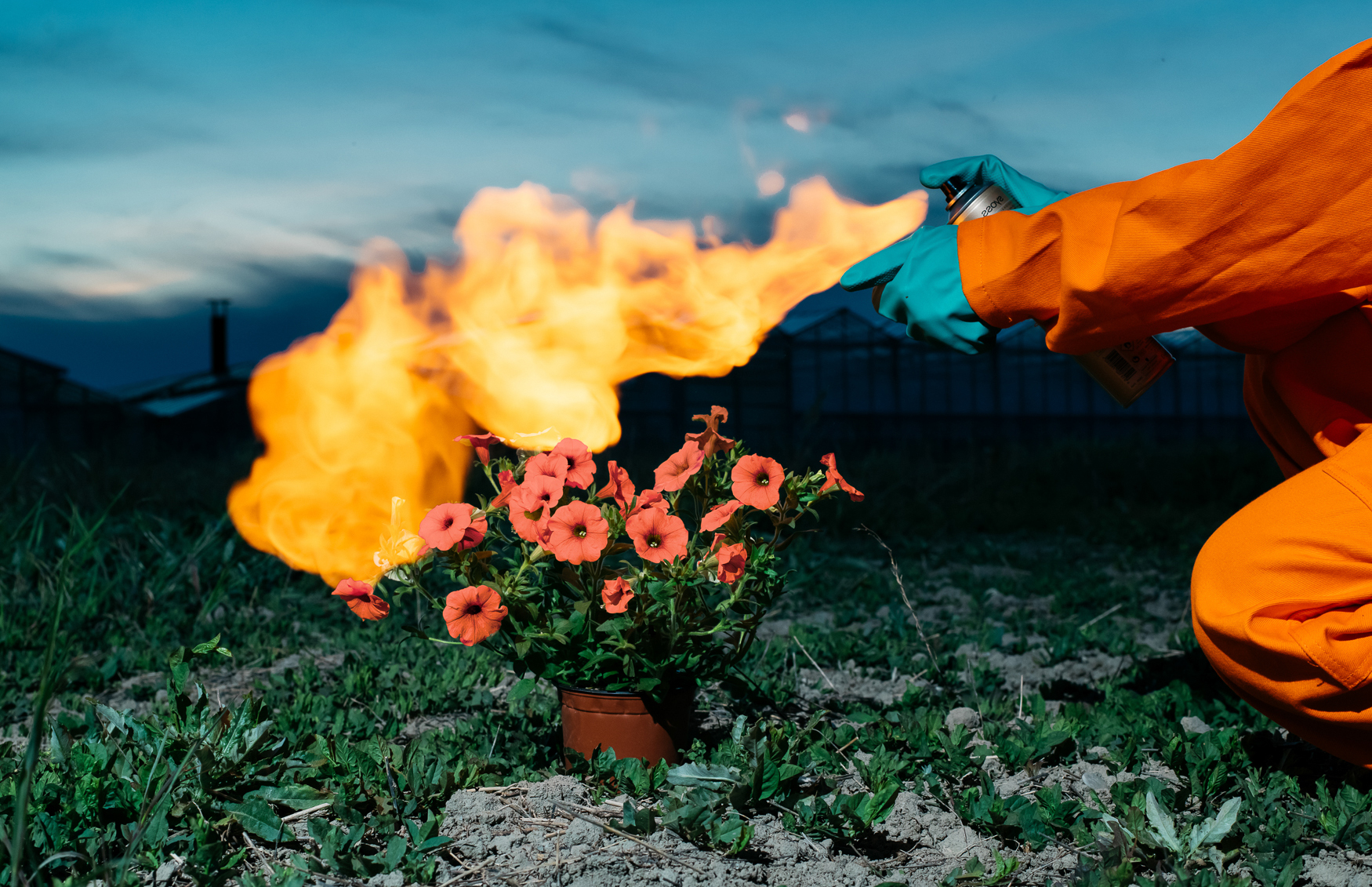
Can nature break the law? A plant scientist investigated a peculiar looking orange petunia, that seemingly escaped from the lab. This discovery caused countries all over the world to declare the flower illegal, and have them destroyed en masse, in what is now called 'The Petunia Carnage'. This story of the orange petunias is more than a scientific anecdote - it shows what can happen when scientific interest, commercial marketing logic, socio-political values, public discourse and unexpected coincidences collide.

The history of the orange petunia case is an illustrative example of the tension between knowledge-based science and its commercial exploitation.
Tell us about The Petunia Carnage.
The true story of the mass destruction of orange petunias started by a coincidence: in 2015, plant scientist Teemu Teeri encountered orange petunias in a planter at Helsinki railway station – much to his surprise, because petunias don't come in orange colors naturally. He put some in his backpack and took them to his lab for genetic sequencing. The DNA tests revealed that the petunias were of transgenic origin. He remembered a controversial 1990's landmark experiment at Max Planck Institute in Cologne, where a gene sequence from maize was inserted into white petunias to make them bloom orange. As far as he knew, the transgenic petunias from Cologne never officially made it to the markets afterward – but he suspected the petunias had made a mysterious 'escape from the lab' in the 25 years after and were sold without permission.
Teemu Teeri told a former student, now working at the food authority of Finland. She initiated additional tests of the orange petunia varieties on the market which led to a recall of 8 petunia varieties. The story got huge when the US Department of Agriculture took it over and issued a statement that all transgenic petunia varieties had to be destroyed. A lot of countries all over the world followed, the orange petunias were declared 'illegal' and destroyed en masse. This so-called 'petunia crisis' led to the disappearance of all orange petunia variants worldwide and caused the damage of 30 million euros in the EU alone.
My idea for this story was to narrate the chronology of the case in a tongue-in-cheek way, consisting of photos, facsimiles, and artifacts, adding fictional elements to scientific facts and archive material. The photographic narrative of the book is based on the cooperation with all relevant actors of the orange petunia case. They have shared their experiences, provided image material, and also granted access to their labs, where they are still permitted to breed transgenic orange petunias for scientific research.

What inspired you to create this project?
I read about the story of the orange petunias in a science journal about three years ago and I was fascinated immediately. Although the story consists mainly of science and legal interpretation, it reads like the plot of a movie. I thought that this really strange story would be the perfect material for a photographic project, created with a 'speculative documentary photography' approach. I was intrigued by the fact that the whole story felt like a blueprint of what can happen if scientific interest, commercial marketing logic, genetic engineering legislation, socio-political values, mass media culture, and unexpected coincidences collide – especially in a controversial field like genetic engineering, where discourse is chronically heated.
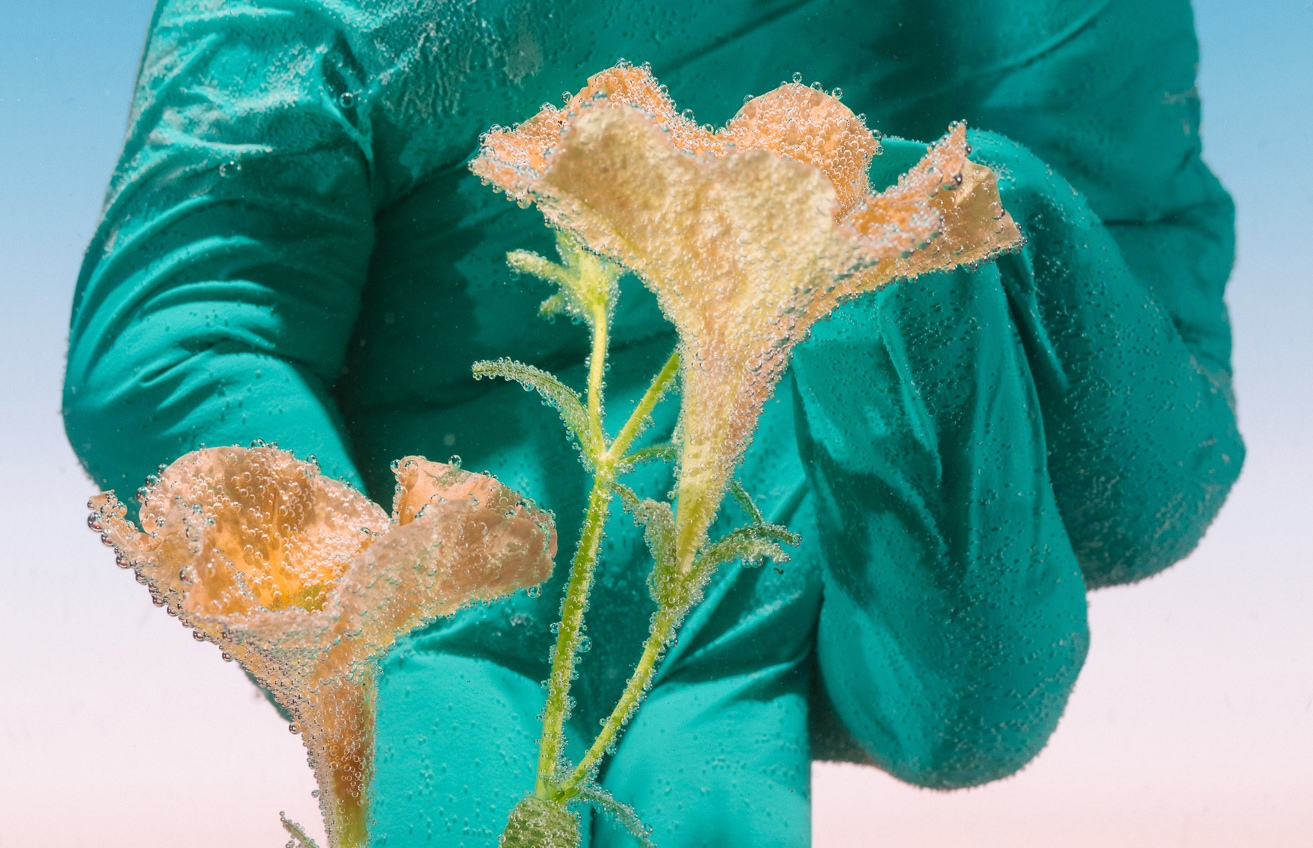
I think I am still influenced by my former studies of landscape architecture, where 'nature' is not perceived as an uninfluenced entity anymore.
What does the destruction reveal about our view on and how we handle nature?
When answering this question, I think I am still influenced by my former studies of landscape architecture, where 'nature' is not perceived as an uninfluenced entity anymore. I'd rather speak of a 'cultured landscape', which might look 'natural' (like most of the forests) but has been shaped by the mark humans are leaving on the planet.
If we look at the transgenic petunias, their destruction, and the process which has led to this, the case is bearing two major elements: the first one is that it includes all the efforts of dominating nature by science and technology. The second element is that it also includes the human effort to limit and regulate the range of that domination. This seems necessary because science has somehow surpassed itself and theoretically would be able to create much deeper interventions. To keep science and technology within the borders of ethics and also to prevent unforeseen consequences of scientific inventions, a huge network of legislation has been developed. So, ultimately, the process which led to the destruction of the transgenic petunias shows what can happen when products of science are circulating without permission and regulations are applied to restore justice – even by drastic measures.
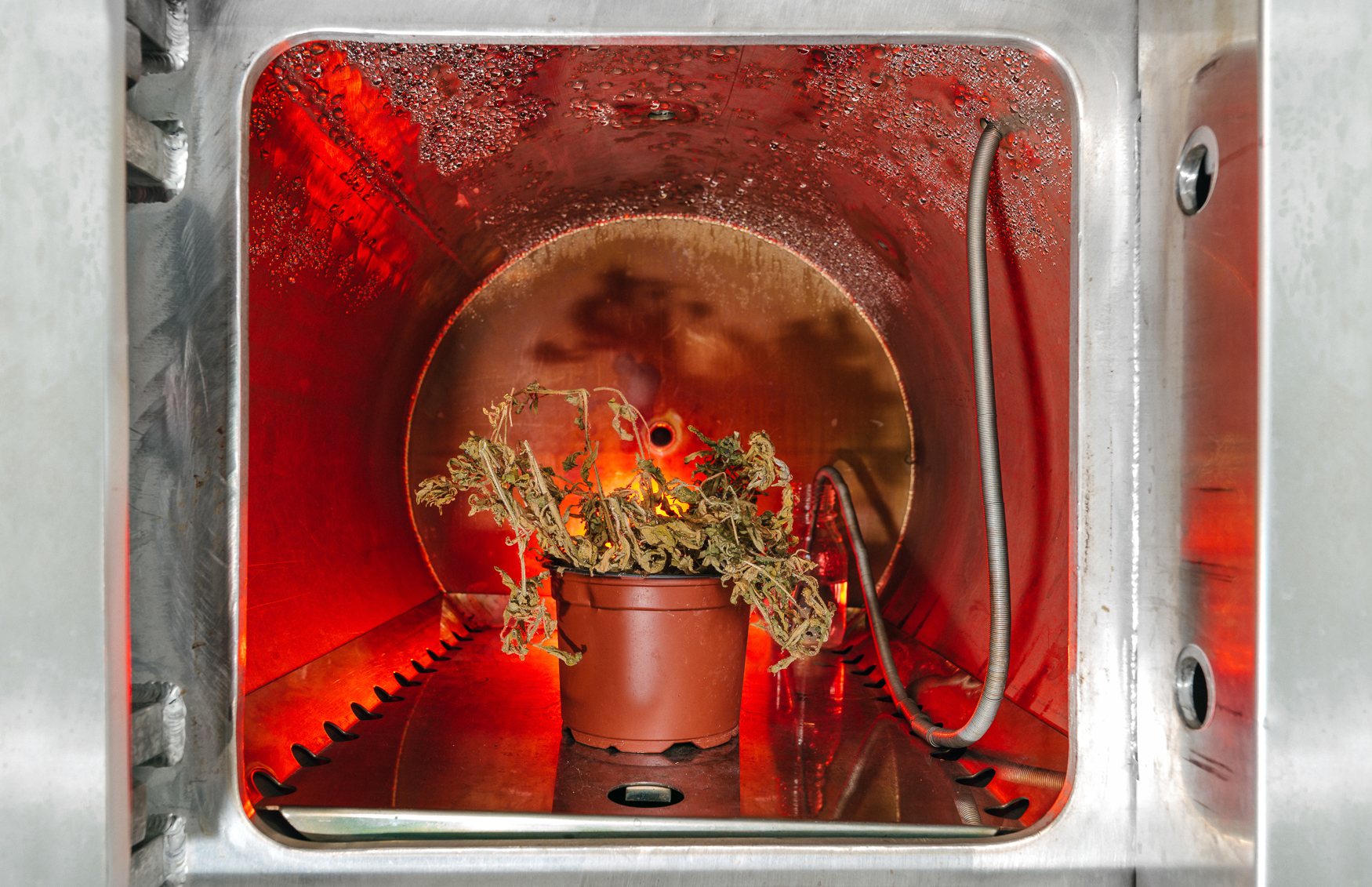
How do you achieve this through your choice of visuals and aesthetics?
I have intended to both take the chronology of the case seriously and also to set something imaginary on top of it. I wanted to tell the story from my perspective as a person who has not been involved, next to adding different elements that link to other discourses which were not that prominent in the original case.
As mentioned, I am driven by the fact that 'nature' is not 'nature' anymore in the age of biotechnology and therefore I chose to work on the project with an aesthetic that changes between documentary and artificial, constantly shifting back and forth. Since color is a major element of the story (it is the orange color that differs transgenic petunias from the others) I chose a very colorful and bright aesthetic and tried to represent the different layers of the story by different recurring color schemes.
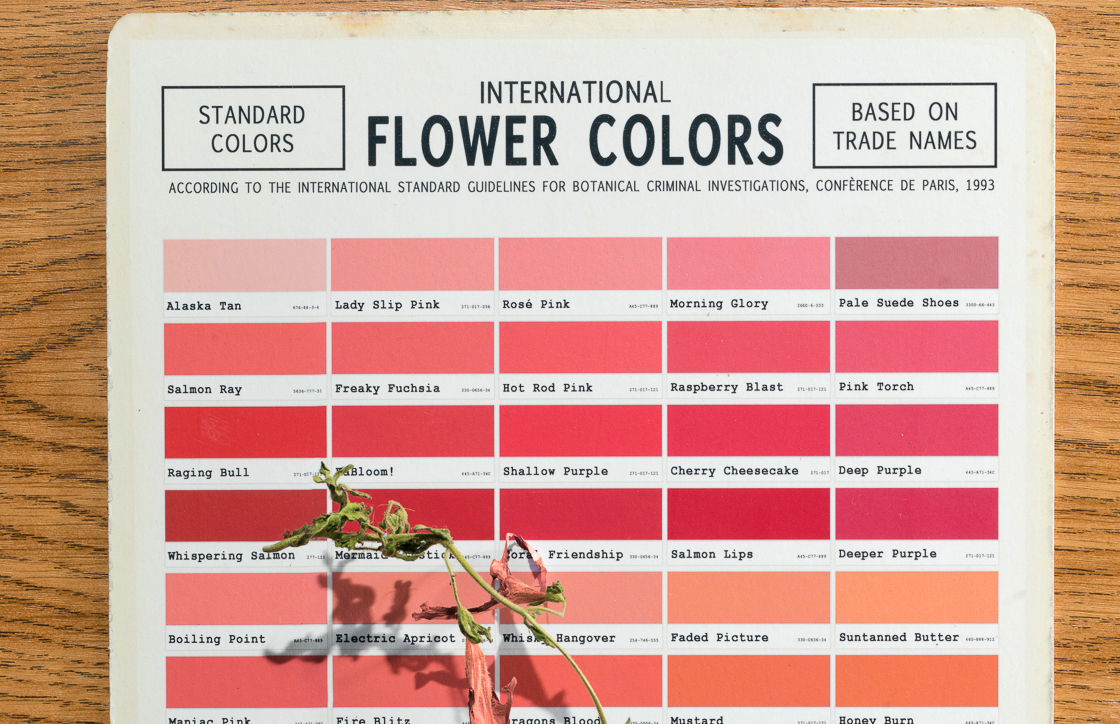
I am driven by the fact that 'nature' is not 'nature' anymore in the age of biotechnology and therefore I chose to work on the project with an aesthetic that changes between documentary and artificial.
What does the project reveal about the connection between science, society, and nature?
The story of the orange petunias is more than a scientific anecdote - it is rather a parable of what can happen when scientific interest, commercial marketing logic, socio-political values, public discourse, and unexpected coincidences collide.
For me, it is also rewarding to reflect upon the protagonists involved: the scientists, the plant breeders, the opponents of genetic engineering, the mainstream media, and the 'public' in general. In the chronology of the case, it is obvious that they all pursued their own interests, which were often only partially compatible with the interests of the other groups. The history of the orange petunia case, therefore, is an illustrative example of the tension between knowledge-based science and its commercial exploitation. The different intentions and convictions of the individual actors permeated the plant, which was turned from an 'innocent' flower into an object of scientific, commercial, and socio-political discourse through an inserted gene sequence. Therefore, the transgenic petunias became the central and ever-changing element of the whole story.
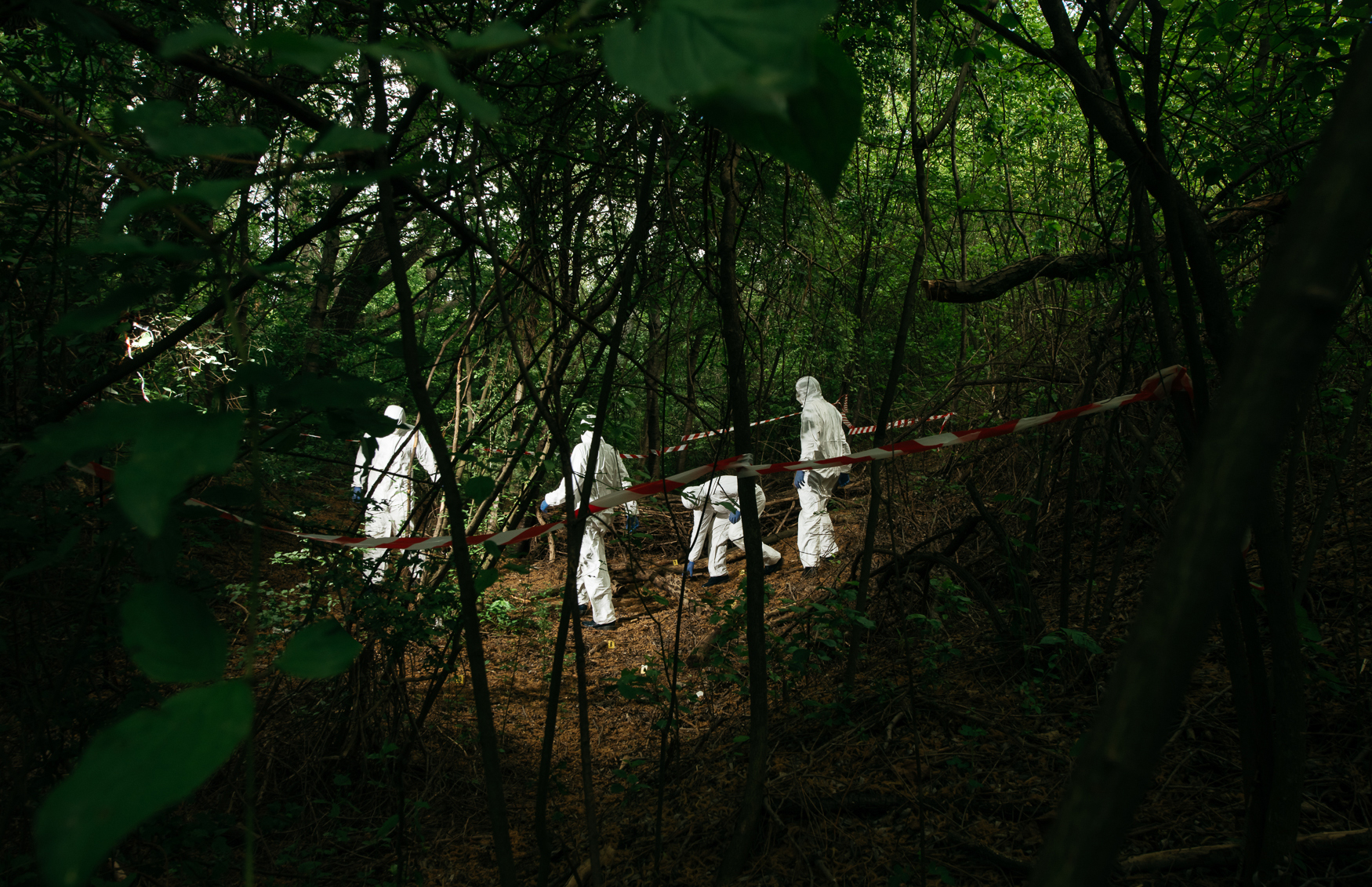
What do you want or hope to achieve with this project?
I wanted to re-tell the story of the orange petunias with the means of speculative documentary photography and using a perspective of 'it could have been this way'. Apart from that, I wanted to contribute to different discourses which I consider as highly relevant, namely genetic engineering and the way it is mediated, mass media culture, and also public discourse, which sometimes is based on half knowledge when it comes to scientific topics, which leads to strange ways of how relevant topics are discussed.
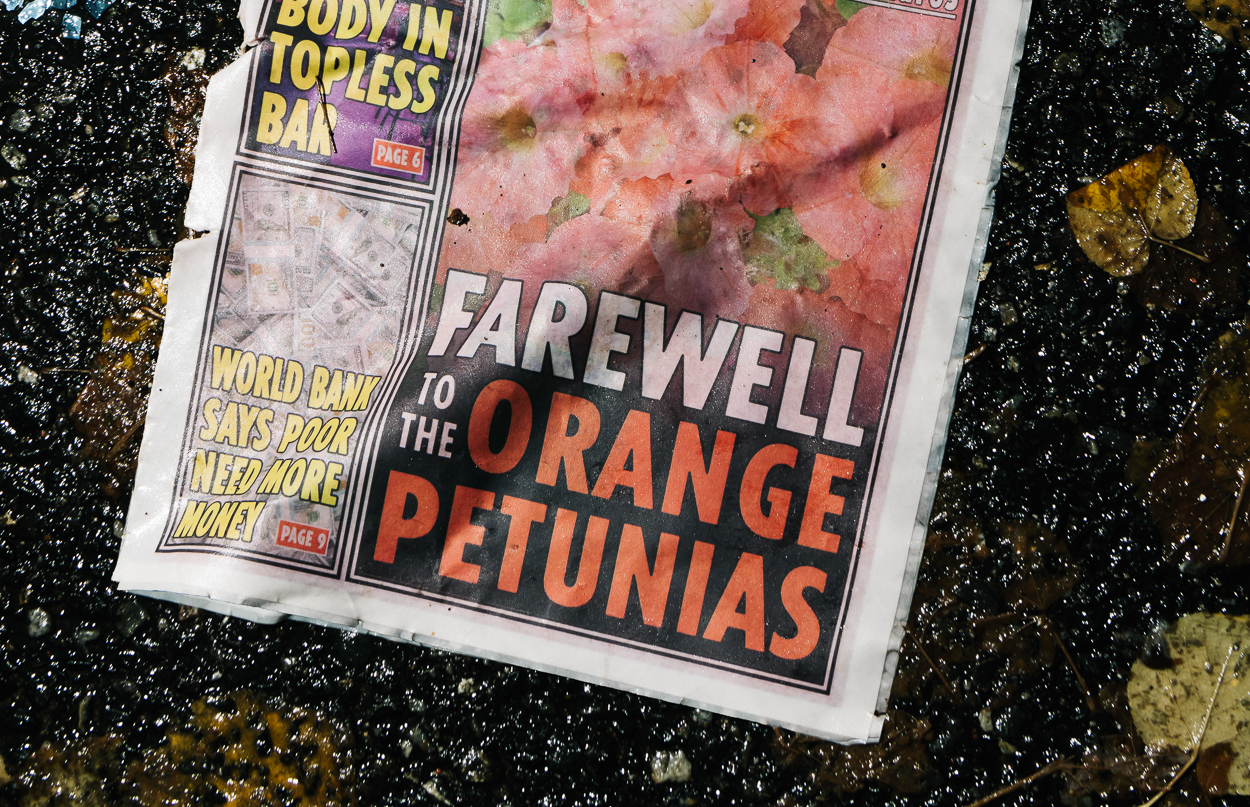
To pay tribute to the destroyed orange petunias, photographer Klaus Pichler has composed this work in an illustrative book. Curious to see more? Check out his instagram @thepichlerklaus.